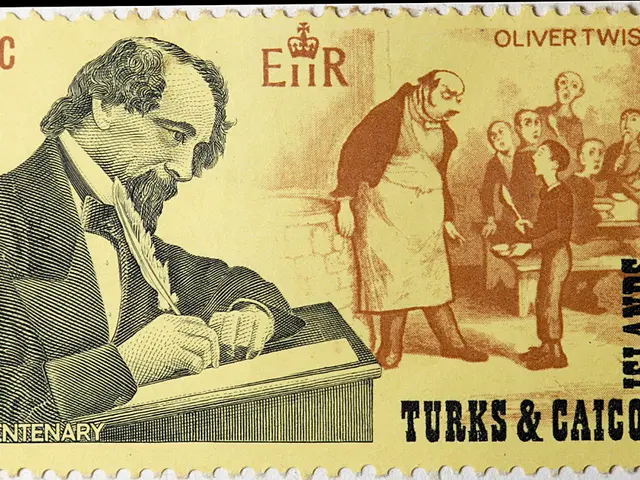Personalized Approach to Lifestyle Factors May Decrease AFib Risk for Individuals
Atrial fibrillation, or "AFib," is the most common type of irregular heartbeat, afflicting hundreds of millions globally. Beyond conventional cardiovascular risk factors like physical activity, diabetes, and smoking, a myriad of comorbidities and socioeconomic factors play a significant role in AFib's development and severity.
According to a review in the journal Circulation, lifestyle factors, coexisting health conditions, and socioeconomic disparities can all impact an individual's risk of AFib. A comprehensive approach to AFib management requires addressing these factors beyond conventional anticoagulant therapy or rhythm control treatments.
Cardiovascular conditions, such as coronary artery disease, hypertension, heart failure, and valvular heart disease, often coexist with AFib, increasing the risk of stroke and complications. Obstructive sleep apnea, chronic kidney disease, chronic obstructive pulmonary disease (COPD), diabetes, and obesity also share a link with AFib.
For instance, obstructive sleep apnea can increase the risk of forming blood clots and alter the heart's structural and electrical properties, contributing to AFib. Continuous positive airway pressure (CPAP) machines can reduce the risk of these complications.
Chronic conditions, like diabetes and COPD, are not only risk factors for AFib but also increase the likelihood of complications. Achieving better control of these conditions and losing weight can help reduce the risk of AFib.
In addition to traditional risk factors, socioeconomic status can influence the management and outcomes of AFib, with lower socioeconomic status linked to higher AFib-related complications.
"The comprehensive management of atrial fibrillation goes well beyond oral anticoagulation for stroke prevention or rate or rhythm control with medication or ablation. This complex disease is driven by numerous risk factors and comorbidities," explained Dr. Stephen Tang, a board-certified cardiac electrophysiologist.
Therefore, a comprehensive, multidisciplinary, and individualized approach to AFib treatment and management is essential. Management strategies will vary based on the patient's underlying risk factors and persistence of the arrhythmia.
This may involve lifestyle modifications, such as regular exercise, weight loss, and cessation of smoking and alcohol, in addition to medications and invasive procedures like catheter ablation to restore a normal heart rhythm. Coexisting health conditions must be managed and treated to minimize the risk of complications and improve patient outcomes.
Enrichment data suggests that additional comorbidities associated with AFib include heart failure, coronary artery disease, chronic obstructive pulmonary disease, chronic kidney disease, diabetes, obesity, and valvular heart disease, as well as thyroid disorders and sleep apnea. Managing these underlying risk factors is crucial in reducing the incidence and complications of AFib.
- The predictive AQ (Atherosclerotic Risk Profile) identifies individuals at increased risk of developing atrial fibrillation (AFib), considering factors like obesity, diabetes, and hypertension.
- Science has shown a strong link between AFib and depression, leading to a higher risk of stroke and unfavorable health-and-wellness outcomes, especially in the population suffering from chronic-diseases.
- A personal-finance obstacle in managing AFib arises due to the costs associated with medications, medical-conditions treatments, and possible procedures like catheter ablation for heart-rhythm restoration.
- Mental-health concerns, such as anxiety and stress, are prevalent among AFib patients, and addressing mental well-being is essential for overall cardiovascular-health improvement.
- Nutrition plays a critical role in AFib management, as a balanced diet low in saturated fats, sodium, and refined sugars can reduce the risk of coexisting health-conditions like obesity and diabetes.
- Fitness-and-exercise can help manage weight, lower blood pressure, and improve heart health, thereby decreasing the risk of AFib development and complications.
- Hypertension, a nonmodifiable risk factor, increases the likelihood of AFib and requires close medical-condition monitoring to avoid related complications.
- As AFib share common risk factors with other chronic-diseases, such as stroke and cardiovascular problems, effective preventive measures should consider a holistic health-and-wellness approach.
- To mitigate the impact of AFib on personal-finance, patients can explore financial assistance programs, insurance options, or cost-effective alternatives for treatments and medications.
- Maximizing AFib management involves recognizing its complex nature, encompassing numerous modifiable and nonmodifiable risk factors, comorbidities, and socioeconomic influences, necessitating a customized and multidisciplinary approach.







